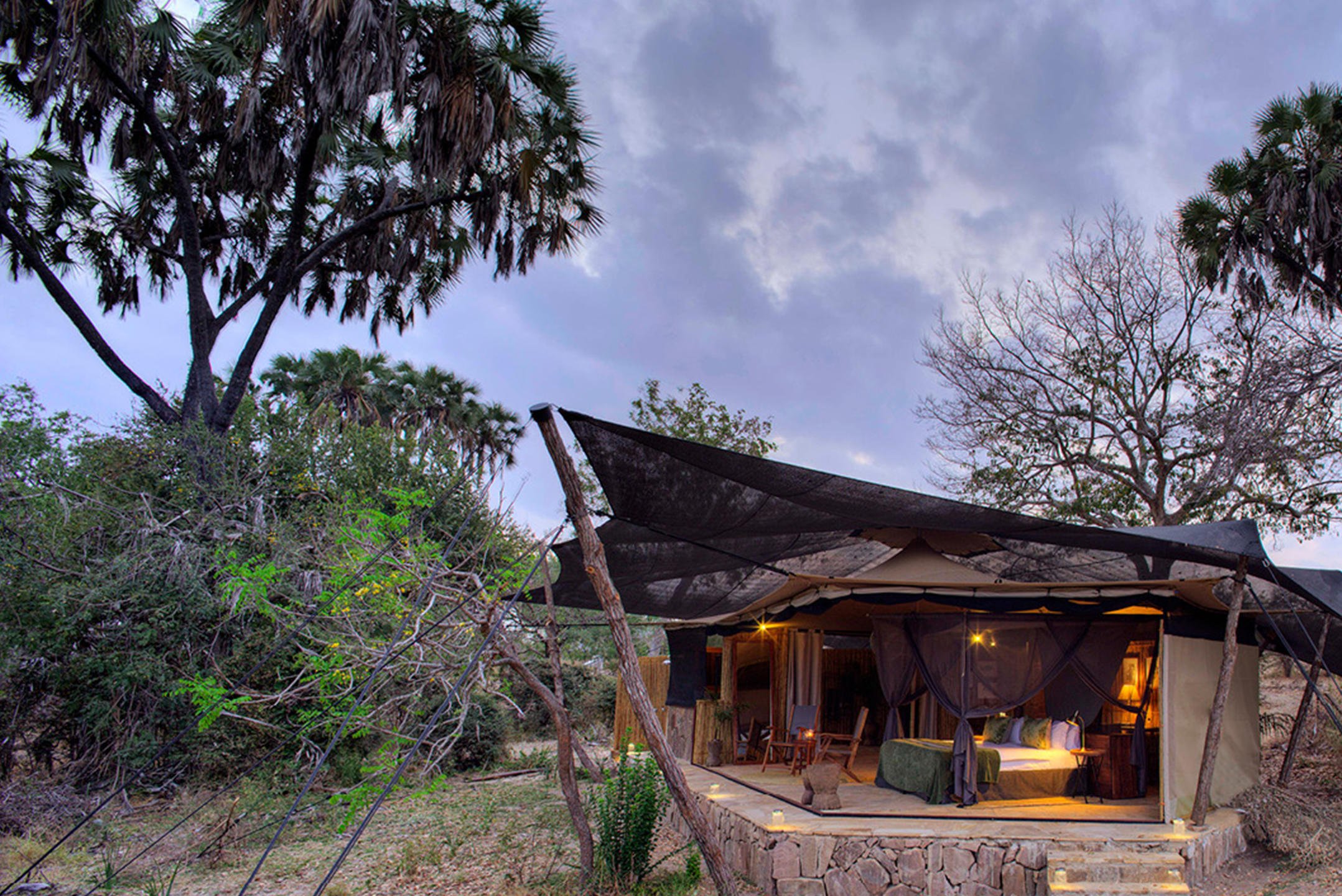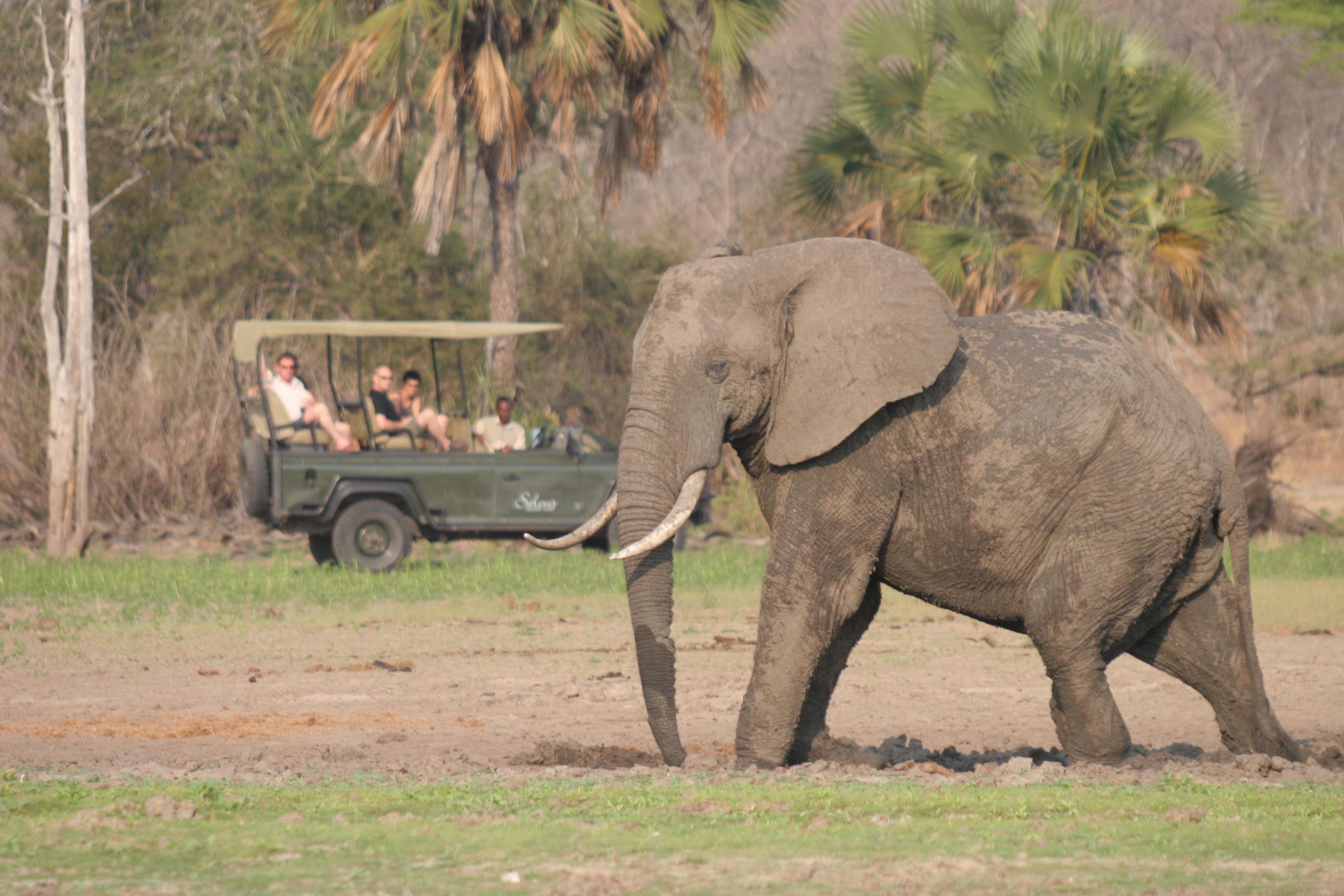SELOUS-NYERERE NATIONAL PARK
Tanzania’s Selous-Nyerere National Park (previously the Selous Game Reserve) is the largest protected area in Africa and a special place to experience Africa on foot or by boat.
The mighty Rufiji River carves through this vast, beautiful landscape of dense woodlands, open plains, and rocky hills. Water from the Rufiji River fills tributaries, inviting masses of birds and wildlife to its edges. The river’s edge offers panoramic views across the wide riverbed and provides a perfect place to watch the sunset.
The park’s safari camps and activities are focused on waterways, due to the high concentration of animals in these areas. Amazing numbers of hippos and crocodiles call its waters home, and viewing them from a riverboat is a must! A guided walk through Selous-Nyerere’s untamed wilderness leaves you in awe of nature’s intricate design.
Seasons
The seasons in Selous-Nyerere can blend into one another, as the lush park takes on a more tropical climate due to its proximity to the coast. The best season to travel to Selous-Nyerere is during its prolonged dry season from July to October. During this time, wildlife congregates along the water systems, and temperatures remain comfortable with less humidity. From November to December, the short rains begin to fall. The rains bring new growth, the next generation of young animal births, and an ideal time for birders. Around the start of the new year, a cycle of high humidity followed by relieving rains continues until the heavy rains arrive, lasting from March until May. Some camps in Selous close during the heavy rains when logistics become more difficult. Their reopening in May is marked by swollen waterways that attract mesmerizing numbers of birds, and create an opportune time for exploring Selous-Nyerere National Park by boat.
Wildlife
The park’s extremely high numbers of animals aren’t very apparent when visiting Selous-Nyerere, as they spread out over an expansive area of land. They do so even more after the rains when the water supply is abundant. This vastness makes Selous extremely wild. Many animals that migrate into areas designated for wildlife viewing may have never encountered a human or vehicle before.
Predator sightings are less common in Selous-Nyerere, making a stay here and to nearby Ruaha National Park a great combination. In Selous, wildlife viewing is focused around its water systems, which provide ample sightings of hippos and massive crocodiles, and a great place to fish and bird. A drive into the thick riverine forest can provide sightings of elephants, giraffes, and beautiful Angola black-and-white colobus monkeys.
Activities
Hop aboard a boat and enjoy a sunset cruise down the beautiful Rufiji River and surrounding lakes. See large pods of hippos, ancient crocodiles basking in the sun, and its amazing population of water birds.
Enjoy a morning walk through Selous led by your knowledgeable and professional guide. Learn about tracks and signs of wildlife, traditional uses of native plants, and survival strategies of its creatures both big and small.
Learn how extreme fluctuations in water levels shift the habits of the wildlife in this dynamic environment and how this has shaped the history of this park.
Hop into a 4x4 vehicle and journey through the bush in search of the area’s wildlife. Stop to watch the sun set along the banks of the Rufiji River.
Accommodations
Check out some of our favorite accommodations in Tanzania’s Selous-Nyerere National Park.
Gallery
Ready to Plan?
Let’s Get Started



















